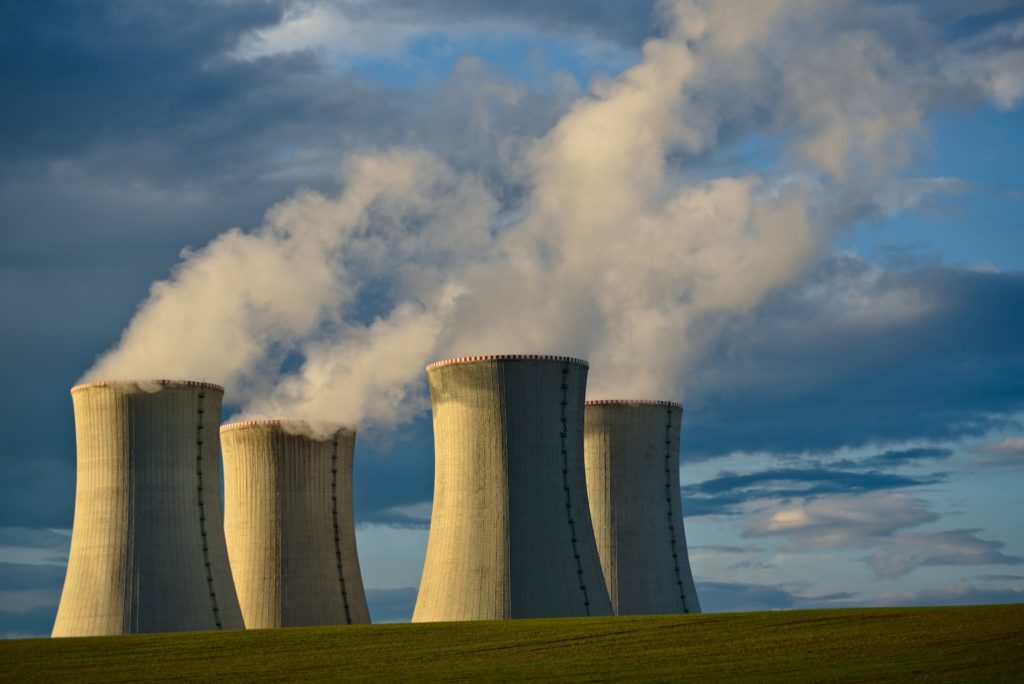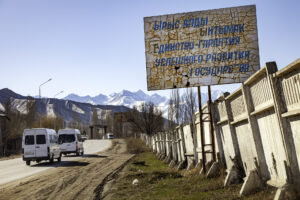A cooperation protocol has been signed between Rosatom and Kyrgyzstan’s Ministry of Energy to build miniature nuclear reactors. However, such a project cannot quickly resolve the country’s energy crisis. This article was originally published on Novastan’s French website on 29 January 2022. First Uzbekistan, then Kazakhstan – now it is Kyrgyzstan’s turn to want to develop nuclear energy. On 20 January, a cooperation protocol was signed between Kyrgyz authorities and the Russian company Rosatom, as described by a press release from the company. The project aims to build at least one miniature nuclear plant in the country, without giving a specific date. Rosatom wants to introduce miniature reactors of the RITM-200N type to Kyrgyzstan. This type of reactor currently propels Russian icebreakers and has been used since 2016. However, the Russian-based technology has not yet been adapted for use on land. Rosatom expects to build the first unit of its kind by 2028, according to Russian media Sputnik. This type of reactor is built by OKBM Afrikantov, a subsidiary of Rosatom.
A long project
In addition to this development, the memorandum “also involves assistance in developing the nuclear infrastructure of the Kyrgyz Republic and joint work aimed at improving the skills of scientific and technical personnel in various fields of peaceful nuclear energy use,” the same press release describes. Read more on Novastan: Central Asia and Russia: an ever-changing relationship However, the implementation of such a project may take a long time in Kyrgyzstan, unlike in Uzbekistan where a nuclear power plant project has already been launched. As relayed by the Russian news agency TASS, the press service of the Kyrgyz ministry affirmed that the project will only be accepted “after agreeing on an appraisal for environmental security, after the approval of a feasibility study, and after being accepted by all the governing organs of the Kyrgyz Republic.”
A delicate energy situation
If this project succeeds, Kyrgyzstan, a producer of uranium, will be able to use its own resources directly on site. The Kyrgyz desire to develop other energy sources comes at a time when the country is experiencing energy instability. According to Kyrgyz media Akchabar, Kyrgyzstan is nearly 90% dependent on hydroelectricity. This makes the country vulnerable to global warming, which affects its water resources and therefore electricity. Read more on Novastan: A significant power shortage is expected for Kyrgyzstan in 2022 During the winter of 2021, the authorities feared an energy crisis, which has admittedly yet to arrive. The levels of the reservoir of the Toktogul dam could, however, be even lower in 2022, describes Radio Azattyk, the Kyrgyz branch of the American media Radio Free Europe. This dam alone is responsible for 30-50% of electricity production in Kyrgyzstan, according to Radio Azattyk and Kyrgyz media Kloop, respectively. Every year, Kyrgyzstan needs 15 billion kilowatt-hours (kWh). However, as the Kyrgyz Economic Minister Akylbek Japarov described it on 11 October, Kyrgyzstan has a structural electricity production deficit of 6 billion kWh each year, according to Radio Azattyk.
Training necessary for nuclear energy pivot
Some experts believe that the contribution of nuclear power – even a small amount – could make it possible to decrease part of this deficit. An analyst of the Russian investment bank VTB Capital, Vladimir Sklyar, estimates that up to 10% of Kyrgyz consumption could be fulfilled by nuclear power, as discussed in Russian media Kommersant. Observers say this will close a third of coal-fired power plants.
However, the country faces a shortage of skilled labour to operate a nuclear power plant. “We don’t have engineers and nuclear scientists to service this nuclear reactor. We need to train specialists. A person needs to learn, practice and work for at least 2-3 years in this field,” says Myrzatai Soultanaliev, senior researcher at the Kyrgyz Scientific and Technical Centre for Energy, who spoke to Russian media Sputnik. “It will take at least 10 years to train such specialists. At least 50 experienced people will be needed to service such small nuclear power plants,” he adds.
A debated choice
Furthermore, the option of nuclear energy seems to be the subject of debate within the Kyrgyz government itself. Deputy Energy Minister Raiymbek Mamyrov believes that “there is no need to build a nuclear power plant in Kyrgyzstan. When the regional resources are considered, there are water resources and opportunities for the construction of hydroelectric power stations,” he explains to Radio Azattyk. “I think these proposals come from the Russian side because it is necessary to advertise Rosatom’s products,” he adds. The Russian company was chosen to build the Uzbek nuclear reactor and is also expected to be chosen by the Kazakh government for its nuclear power plant project. “Currently we use only 8 to 10% of our regional resources and produce 15 billion kilowatts of electricity. Which means there is a potential to generate 135-140 billion kilowatt-hours,” former Deputy Prime Minister Aaly Karachev told Radio Azattyk. “In such conditions, we should not talk about the construction of a nuclear power plant, but rather pay attention to the construction of a hydroelectric power plant, which is more suited to our objectives. It’s cheaper and less harmful to the environment,” he said.
Written by Paul Mougeot
Translated from French by Matthew Devereux
Edited by Mari Paine
For more news and analysis from Central Asia, follow us on Twitter, Facebook, Telegram, Linkedin or Instagram.
 Kyrgyzstan wants to build miniature nuclear power plants
Kyrgyzstan wants to build miniature nuclear power plants 



